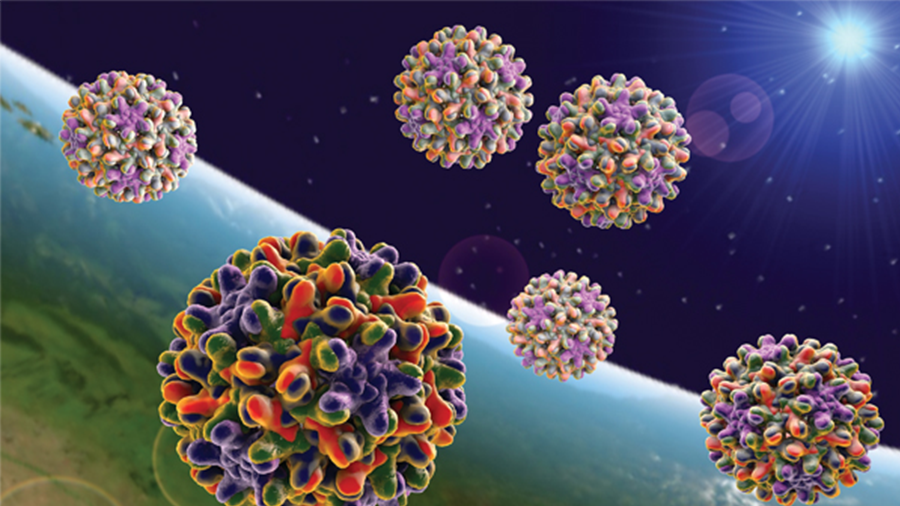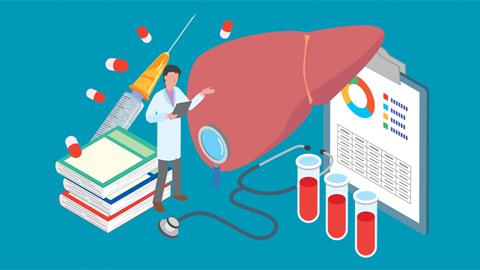World Hepatitis Day
The ASBMB participated in World Hepatitis Day on July 28 by sharing research about the mechanisms and effects of viral hepatitis. World Hepatitis Day is one of the World Health Organization’s eight official global public health campaigns. While advocate groups marked their observances on various dates throughout the years, the WHO picked July 28 in 2010 because the date coincides with the birthday of the late Nobel laureate Baruch Samuel Blumberg, a researcher at the National Institutes of Health who made significant contributions to the study and prevention of hepatitis B.
 A good place for us to start
A good place for us to start
In 2010, the Journal of Biological Chemistry unveiled a thematic series of reviews that showcases advances in understanding the hepatitis C virus. Associate Editor Charles Samuel, who organized the series, notes that two of the authors later shared the Lasker prize for their hepatitis C work. Read the reviews.
Using the prism of proteomics
“(P)roteomics is well positioned to continue to make significant contributions to the field of infectious disease research,” according to Ileana Cristea of Princeton University, who organized a special issue of the journal Molecular & Cellular Proteomics on infectious disease. Read the special issue.The effects of alcohol plus hepatitis B
Studies have shown that damage to the liver affects how the organ creates and clears cholesterol. Studies also have shown that hepatitis B alone and alcohol alone affect cholesterol homeostasis. With those results in mind, a research team in China recently set out to learn more about the combined effects of hepatitis B and alcohol consumption on cholesterol deposition in the liver. They reported their findings in the Journal of Lipid Research. Read their work.
Hepatitis C and insulin resistance
A French research team exploring the molecular basis by which hepatitis C virus induces diabetes reported recently in the Journal of Biological Chemistry that a canonical signaling pathway is disrupted in the liver of infected mice, impairing glucose uptake and leading to insulin resistance. Read the study.
Examining the cancer connection
Infection with hepatitis C is a major risk factor for liver cancer. Learn about how viral proteomics informs what we know about oncogenesis in this review article in the journal Molecular & Cellular Proteomics.
“A gatekeeper in the pathogenesis of viral hepatitis”
Researchers at the Cleveland Clinic discovered that the core protein of hepatitis C virus depends on the lipid droplet scaffold protein perilipin 3 to form a viral lipid envelope and trigger fatty liver disease. Read their study in the Journal of Lipid Research.
The role of exosomes in hepatitis B replication
Hepatocytes infected with hepatitis B virus shed exosomes containing viral proteins and RNA. Researchers investigating the content of these exosomes found that they also have higher than usual proteasome content, which may muffle the immune response during infection. Read the study in the journal Molecular & Cellular Proteomics.
Why grazoprevir is more potent than simeprevir
A paper published in the Journal of Biological Chemistry last year (authored by researchers at the pharmaceutical giant Merck) explored the structural basis for the different potency of two hepatitis C virus protease inhibitors against resistant mutants. Read the study.
Stopping stealthy hepatitis B
The hepatitis B virus can evade normal immune systems. However, a research team in Japan recently reported in the Journal of Biological Chemistry that there is another way HBV can be cleared -- by using a known cellular pathway for RNA degradation. Read the study.
Protein interactions of the Flaviviridae family
A review in the journal Molecular & Cellular Proteomics on hepatitis C viruses and others in its family surveys the viral life cycle and how proteomics studies have contributed to our knowledge of protein dynamics in hepatitis infection. Read the review.
Hepatitis C’s protein interaction network
German researchers used fluorescent labeling, flow cytometry and FRET to establish the first protein-protein interaction network in hepatitis C virus proteins. They reported their results in the journal Molecular & Cellular Proteomics. Read the study.
Hepatitis C and cancer pathway mediators
A study published last year in the Journal of Biological Chemistry explored the basis for HCV-induced chronic liver disease, cancer and death. The researchers found that the virus downregulates a regulatory factor (IRF5) involved in signaling pathways. This downregulation has a greater impact on proteins involved in cancer and autophagy than more typical immune system molecules, such as cytokines, which explains the link to cancer. Read the study.
Enjoy reading ASBMB Today?
Become a member to receive the print edition monthly and the digital edition weekly.
Learn moreGet the latest from ASBMB Today
Enter your email address, and we’ll send you a weekly email with recent articles, interviews and more.
Latest in Science
Science highlights or most popular articles

Iron could be key to treating a global parasitic disease
A study has found that leishmaniasis causes body-wide changes in iron balance, leading to red blood cell damage.

Environmental DNA is everywhere
The ability to extract trace bits of DNA from soil, water, and even air is revolutionizing science. Are there pitfalls?

Early COVID-19 research is riddled with poor methods and low-quality results
The pandemic worsened, but didn’t create, this problem for science.

From the journals: MCP
Three views of mass spec: analyzing secreted protein spectra, imaging mass spectrometry for clinical use and spectral libraries for MS data analysis. Read about these recent papers.

Understanding the fat science
Researchers at UCLA investigate lipid remodeling in the liver for energy generation.

No oxygen? No problem
By studying how electric fish survive in hypoxic streams for months at time, researchers may find new ways to target tumors.
